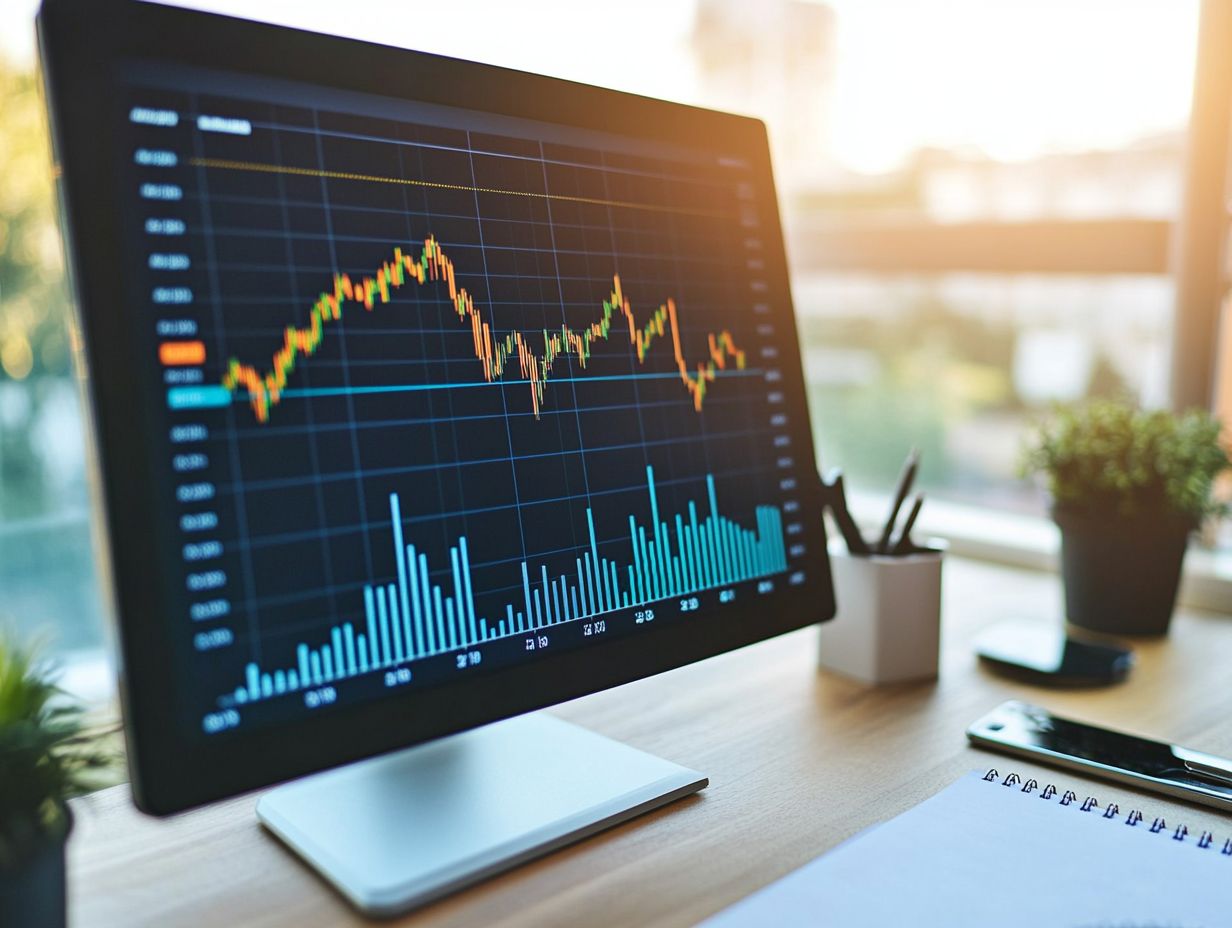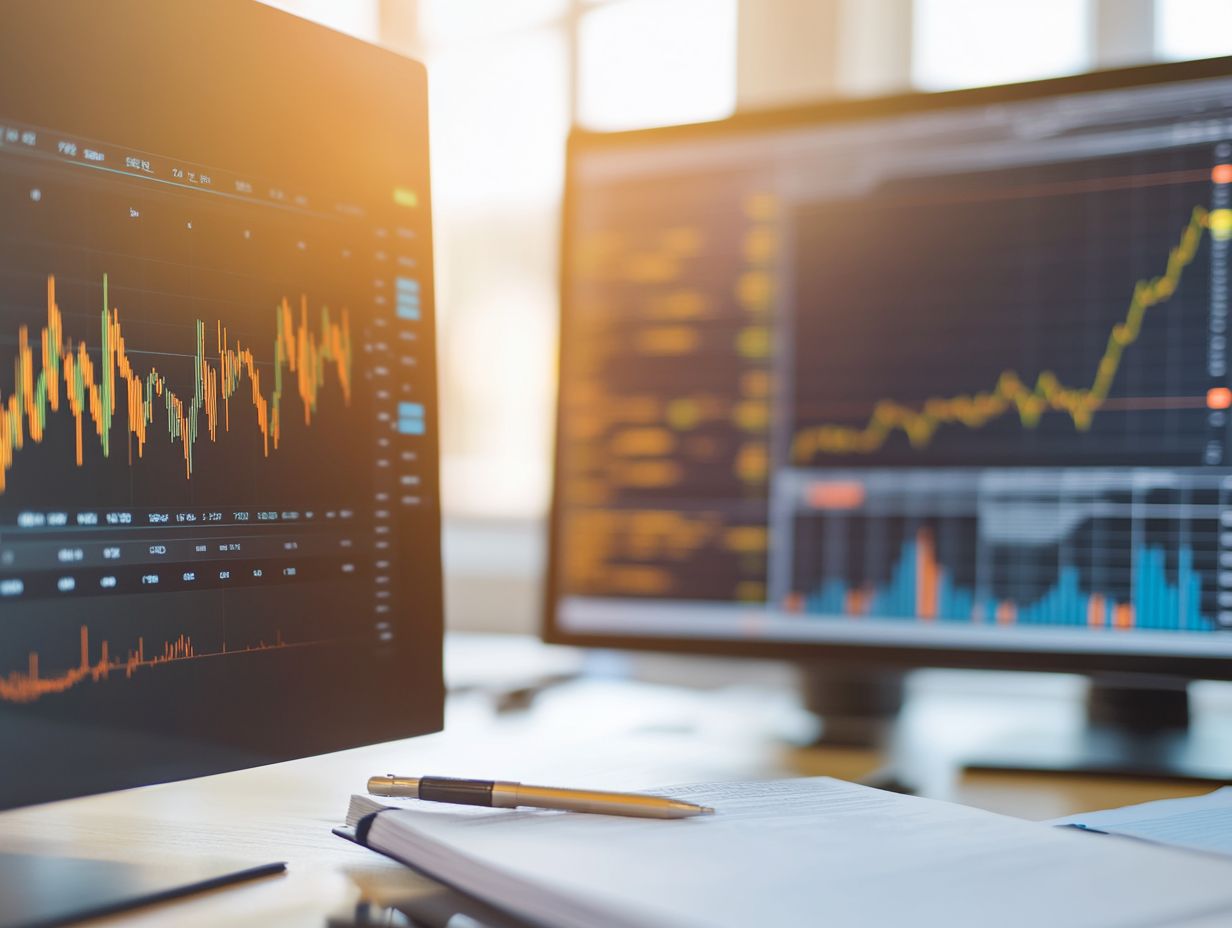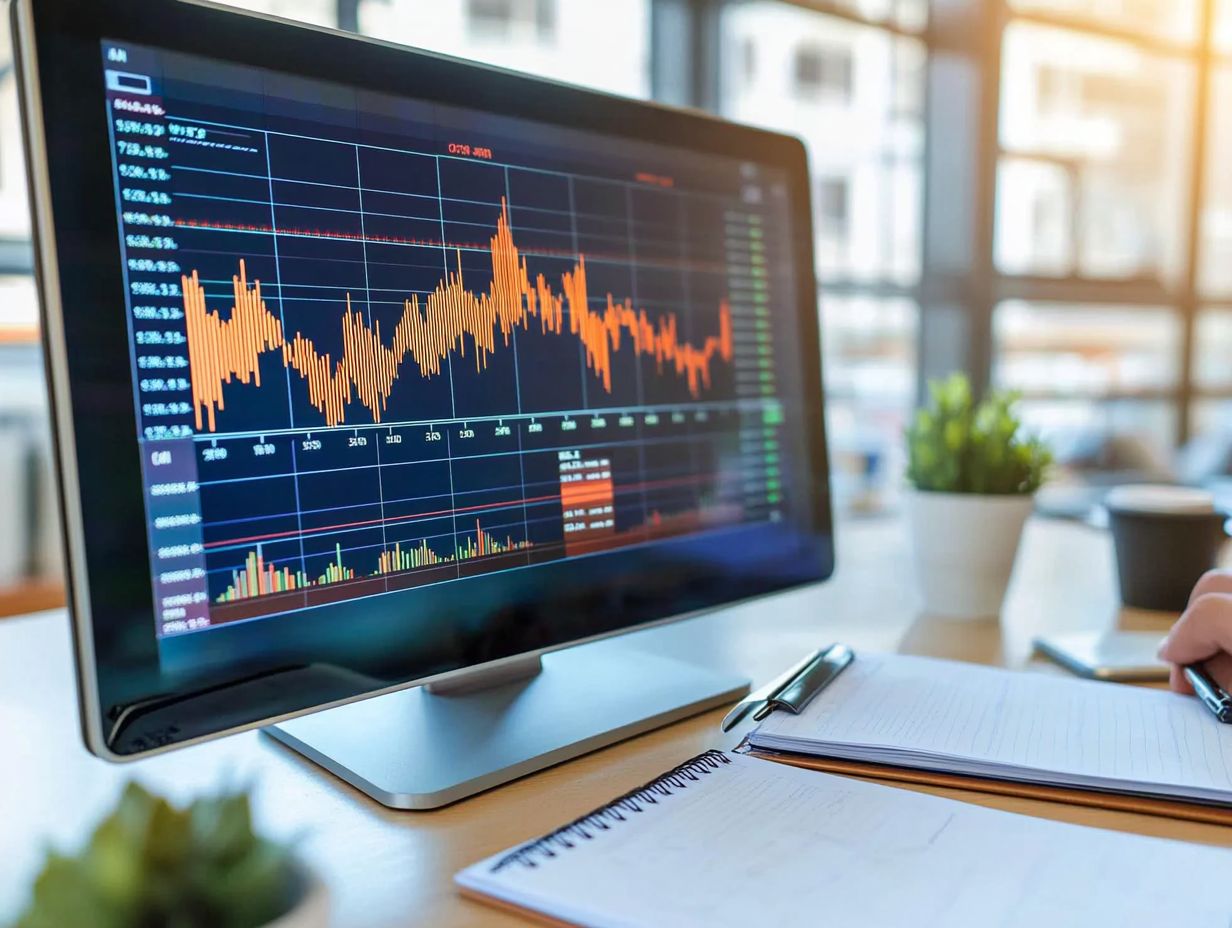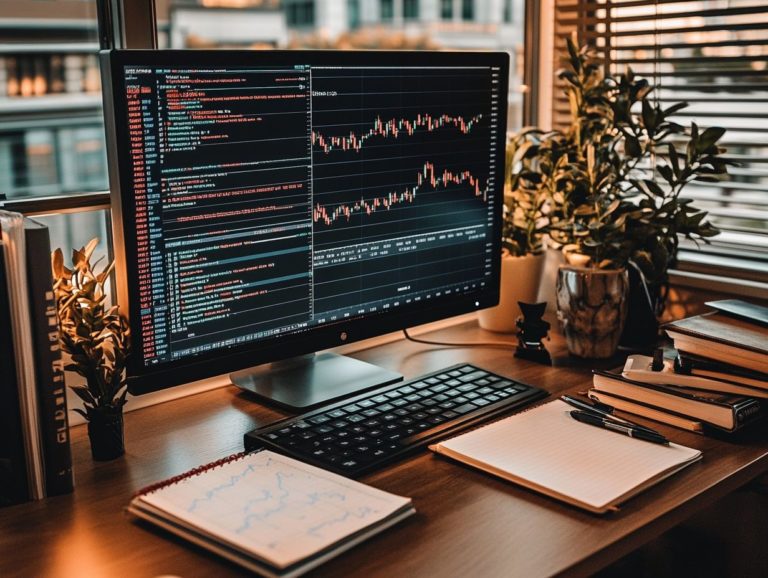How to Evaluate Technical Analysis Software
Technical analysis stands as a cornerstone for you, the trader or investor, striving to navigate the complexities of financial markets.
With the right software at your fingertips, you can unlock powerful insights and make informed decisions. This article delves into the key features you should seek out, ranging from charting tools and real-time data to customization options that fit your unique needs.
When selecting software, essential factors for you to consider include cost, user-friendliness, and the level of support available.
Discover how to effectively evaluate these tools through backtesting and performance tracking, ensuring that your investments are nothing short of wise.
Contents
Key Takeaways:

- Look for software with robust charting tools and various indicators.
- Choose software that offers real-time data tailored to your style.
- Consider cost, ease of use, and customer support.
What is Technical Analysis?
Technical analysis is your go-to methodology for assessing and predicting potential future price movements in financial markets, whether you’re diving into stocks or engaging in forex trading. By analyzing trading data and historical market data, you can uncover insights that empower your trading decisions. This approach relies heavily on technical indicators, charting tools, and well-crafted trading strategies to spot promising opportunities rooted in price trends and market sentiment.
As you examine patterns and trends in price movements, gain valuable insights to enhance your decision-making process. Tools like moving averages, the relative strength index (RSI), and Fibonacci retracements are essential for pinpointing those critical entry and exit points, allowing you to seize market fluctuations to your advantage.
Historical data becomes your vital foundation, providing the context necessary to evaluate current market conditions effectively. By integrating these elements, you not only sharpen your ability to identify potential market reversals or continuations but also cultivate a disciplined approach to trading one that is essential for minimizing risks and maximizing profits.
Key Features to Look for in Technical Analysis Software
When searching for technical analysis software, focus on features that can boost your trading performance. Look for tools that provide insightful signals.
Seek out customizable charts for in-depth trend analysis and dependable trading alerts to keep you informed of significant price movements. Thorough trading metrics will enable you to assess your performance over time.
These elements empower you to make informed decisions and refine your strategies effectively.
Charting Tools and Indicators
Charting tools are essential for your technical analysis, allowing you to visualize price movements through various formats like candlestick charts and line charts. By utilizing technical indicators such as moving averages and indicators that show price momentum, you can identify support and resistance levels more effectively key components for creating robust trading systems.
These visual aids empower you to recognize patterns and trends that may signal potential price movements. For example, the relative strength index (RSI) and Bollinger Bands offer valuable insights into market momentum, helping you pinpoint overbought or oversold conditions. Fibonacci retracement levels serve as practical benchmarks for spotting price reversals, guiding you in your decision-making process.
By integrating these tools, you not only enhance your entry and exit strategies but also develop a deeper understanding of market psychology, ultimately elevating your trading outcomes.
Start evaluating your software options today to elevate your trading game!
Real-Time Data and Customization Options

Access to real-time data is essential for traders who thrive on timely market information. It enables swift decisions in a dynamic trading environment.
Customizing charts and indicators in your trading software allows you to tailor the platform to your specific strategies and preferences. This ultimately enhances your trading effectiveness.
In this fast-paced landscape, immediate access to price movements, volume changes, and market news can significantly impact trading outcomes. Often, split-second decisions driven by current data can mean the difference between profit and loss.
Customization options within trading software streamline your user experience. They empower you to focus on the metrics that matter most, increasing your chances of success. These features help you adapt your strategies based on market fluctuations, maximizing potential returns while minimizing risks.
Factors to Consider When Choosing Technical Analysis Software
When selecting the ideal technical analysis software, think carefully about several key factors. Cost and subscription options are paramount, along with a user-friendly interface and reliable customer support.
Striking the right balance between affordability and functionality is crucial. This ensures effective leverage of the software to enhance your trading performance.
Cost and Subscription Options
The cost of technical analysis software can vary significantly. You’ll find a range of subscription options tailored to different trading needs and budgets. This includes free basic services to premium platforms boasting advanced functionalities.
Among the most common pricing structures are:
- Monthly subscriptions
- Annual plans
- One-time purchases
Each option has its own advantages and drawbacks. Monthly subscriptions offer flexibility, allowing experimentation with various platforms without a long-term commitment. However, these costs can accumulate quickly over time.
Annual plans usually come with a discount, making them ideal for dedicated traders ready to invest upfront. One-time purchases can be tempting as they eliminate recurring fees, but they might lack the latest features and updates that subscription services frequently offer. It s essential to evaluate these alternatives carefully to find the perfect fit for your trading journey.
User-Friendly Interface and Customer Support
A user-friendly interface is essential in technical analysis software. It allows you to navigate complex data with ease and make informed decisions swiftly. These factors can significantly impact your trading performance.
Reliable customer support is equally important. It provides the assistance you need when challenges arise or guidance is required. For you as a trader, a seamless experience can be the key to capitalizing on opportunities rather than watching them slip away.
It s wise to evaluate software by seeking out demos or trials. This gives you the chance to experience the intuitiveness of the interface firsthand. Reading user reviews is also beneficial in assessing customer support effectiveness, particularly in terms of responsiveness and problem resolution.
A platform that combines an intuitive design with strong support enhances your experience and builds your confidence. This enables you to focus on achieving your financial goals without unnecessary stress.
How to Evaluate the Effectiveness of Technical Analysis Software

Evaluating the effectiveness of technical analysis software is essential for ensuring it aligns perfectly with your trading needs. You can conduct this evaluation using methods like backtesting testing a trading strategy using past data and performance tracking, which enables assessment of the accuracy and reliability of the trading signals generated by the software.
Backtesting and Performance Tracking
Backtesting serves as an essential component in software for analyzing market trends, enabling you to validate your trading strategies against historical data. This allows you to make informed decisions as you move forward.
Equally important is performance tracking, which helps you assess key trading metrics over time, allowing for refinement of your strategies based on past results.
This dual approach gives you the power to delve deeper into your methodologies, revealing the intricacies of market behavior and providing valuable insights into the viability of your strategies. For example, if you’re using moving averages, you can run backtests across various timeframes to identify optimal entry and exit points.
By actively monitoring performance metrics like win ratios, average drawdowns, and overall profitability, you can make data-driven adjustments that enhance your approach. Best practices recommend keeping detailed records of each trade and regularly revisiting your backtest results to adapt to evolving market conditions. This ongoing evaluation boosts your confidence and sharpens your trading skills.
Accuracy and Reliability of Predictions
The accuracy and reliability of predictions made by software for analyzing market trends are critical, as they directly impact your trading decisions and overall success. Evaluate how well the software adapts to changing market conditions to reduce your risks and increase your returns.
Understanding the effectiveness of these tools is crucial. Their success depends on their ability to analyze real-time data and incorporate dynamic market conditions into their algorithms. Factors such as volatility, liquidity, and macroeconomic indicators significantly shape price movements, thus influencing the software s predictive capabilities.
Using machine learning significantly improves prediction accuracy by continuously refining models based on historical and ongoing market data. As you navigate an increasingly complex financial landscape, leveraging this advanced technology is imperative for making more informed and timely trading decisions.
Frequently Asked Questions
What is software for analyzing market trends and why is it important to evaluate it?

Software for analyzing market trends is a tool used by traders to analyze market data and make informed decisions about buying and selling stocks. It is important to evaluate this software to ensure its accuracy and effectiveness in helping you make profitable trades.
What are the key features to look for when evaluating technical analysis software?
Some key features to consider when evaluating software for analyzing market trends include charting capabilities, indicators and overlays, customization options, real-time data, and compatibility with different devices and operating systems.
How can I determine if a technical analysis software is reliable?
One way to determine the reliability of technical analysis software is to read reviews and feedback from other traders who have used it. You can also test out the software yourself by using a free trial or demo version before making a purchase.
Are there any red flags to watch out for when evaluating technical analysis software?
Yes, some red flags to watch out for include software that makes unrealistic promises or guarantees, lacks customer support, has a confusing user interface, or does not provide accurate data and analysis.
Is it necessary to have a background in technical analysis to effectively evaluate technical analysis software?
No, while having some knowledge of technical analysis can be helpful, it is not necessary to evaluate software for analyzing market trends. The software should be user-friendly and intuitive enough for traders of all levels to use and understand.
What are some recommended software options for beginners?
Some popular and user-friendly software options for beginners include TradingView, MetaTrader, and StockCharts. It is always a good idea to try out different software and find one that best fits your trading style and needs.






